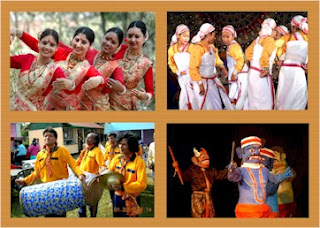Old Delhi
Old Delhi
I sauntered through the Turkmen Gate in Old Delhi towards Bulbuli Khana through the squalid, yet quaint alleys which resonate with the remnants of a once glorious civilisation. It broke my heart to see the last remains of the Mughal architecture crumbling away slowly.
The partition of India meant a death knell to the heritage of chaste Urdu. Delhi, which was primarily a Muslim city, turned into a cosmopolitan city post-partition as refugees trickled in from Pakistan. There were reprisals against the Muslim inhabitants of Delhi. Many had not pictured or imagined leaving Delhi or migrating to Pakistan but as the Hindu and Sikh refugees trickled in, they brought in harrowing tales of riots and the pain of leaving homes in Pakistan. The Muslims of Delhi faced the full brunt of the partition riots, especially in entire neighborhoods like Paharganj, Karol Bagh and Sabzi Mandi. Many were either wiped out, losing their lives in the ensuing violence and savagery of the riots, or left for Pakistan. The Muslims of Delhi were reduced to a small section of Old Delhi, which remains today in the areas of Jama Masjid and Turkman gate.
I met Rahim Ansari who is in his eighties, sipping tea at a stall at Turkman gate. “Most of the Muslims of Delhi migrated to Pakistan, some had no choice, others got killed or ran for their lives.” I asked him what made him stay in Delhi. He smiled and replied, “My father was a religious man and had faith in Allah, we overcame the worst or perhaps were fortunate to do so.”
“Today, Urdu is all but dead,” laments an old Imam I met at Ballimaran Jama Masjid which had Persian inscriptions on its internal walls. “The younger generation has no knowledge or any clue of the tehzeeb (culture) of the once glorious Delhi. These young boys use expletives in every sentence, this is kabadi khana (junk shop) Urdu,” he says scornfully, before meandering towards his home after evening prayers.
Tajjuddin, an auto rickshaw driver in his sixties is a second generation Delhi Muslim, he informs me. His father worked for the Badhani Muslims that lived in Paharganj before partition. After the Badhani’s left for Pakistan, his father started driving the horse tonga in independent India. Much of the educated elite and business class Muslims had left for Pakistan. “I drove the tonga for 20 years, now I have been driving the auto rickshaw for the past 10 years.” I asked him about the condition of the Old Delhi Muslims. “I have six sons, all are good for nothing,” he says adding that a similar story resonates in most Old Delhi Muslim homes. When I asked him if he had managed to give a decent education to any of his sons, he groused that none of them had studied beyond metric (10 std). This might also have been the answer to all his problems. After partition, a large section of Old Delhi was occupied by incoming refugees, but today most had left for New Delhi or were leaving for better housing colonies in New Delhi or NCR, he says. The property prices of New Delhi and NCR have increased 10 folds in the last 10 years, but Old Delhi is still crawling on its knees.
As I spent time clicking pictures near Badi Eidgah near Paharganj, I met Rehmat Kermani, a young handsome boy in a Pathani suit, who belongs to a new generation of Old Delhi Muslims that are no longer nostalgic or elegiac about the past glory or culture. In the midst of sounds of the azaan and pigeon callers on roofs tops, I heard Rehmat asking, “Bhai are you from Bombay?” When I answered in the affirmative he said, “I would like to try my luck in modeling.” I encouraged him to do so. He got excited and further added that he wished he could also act in television serials. Inviting me to his home later in the evening, he introduced me to his elder brother Guddu Bhai.
Guddu, a young man in his 30’s greeted me warmly and insisted on taking me for some kebabs at an eatery on Minto Road. A member of a leading political party, he kept gloating and trying to impress me with his brand new car, asking me more than once if I enjoyed the warm temperature of his car to the chilly wind of Delhi. When I mentioned to him my interest in the history of Delhi, he gave a caustic smile and said, “These walls and domes may be good for books and cameras, but look at the people out here, they are busy struggling for their two square meals.”
Today, Old Delhi is an interesting place and at a crossroads where the older generation of Muslims or romantic history lovers like me lament the extinction of a civilisation and the younger generation for whom the urge to compete, succeed and pursue prosperity in the new world is the primary concern.


.jpg)
Did you know that you can shorten your links with Shortest and earn $$$$ from every visit to your shortened links.
ReplyDelete